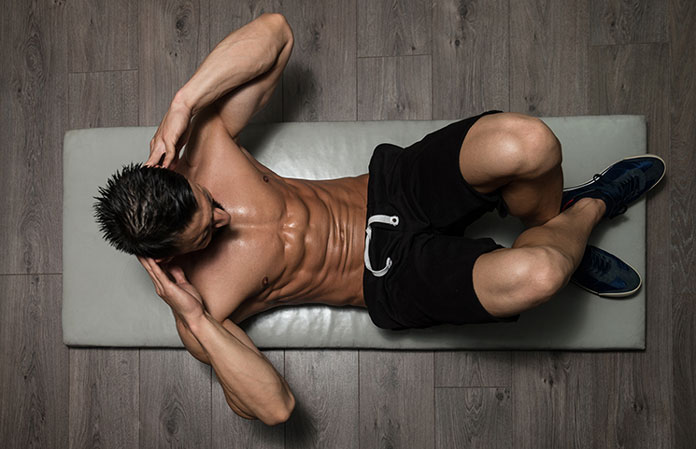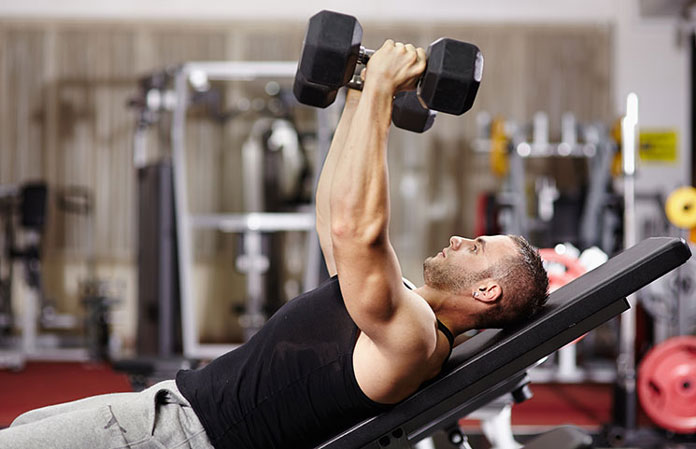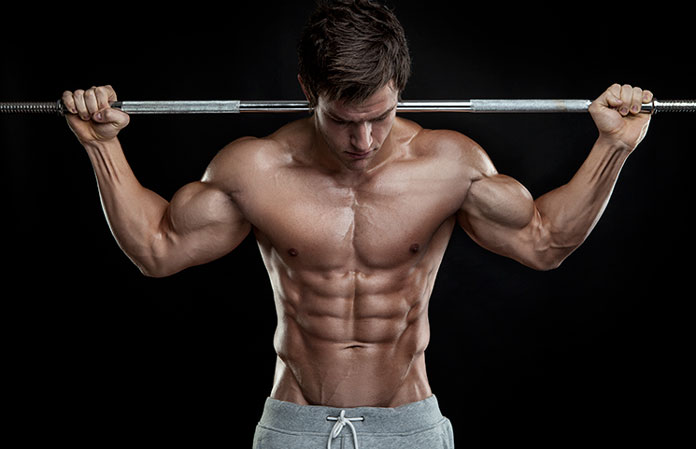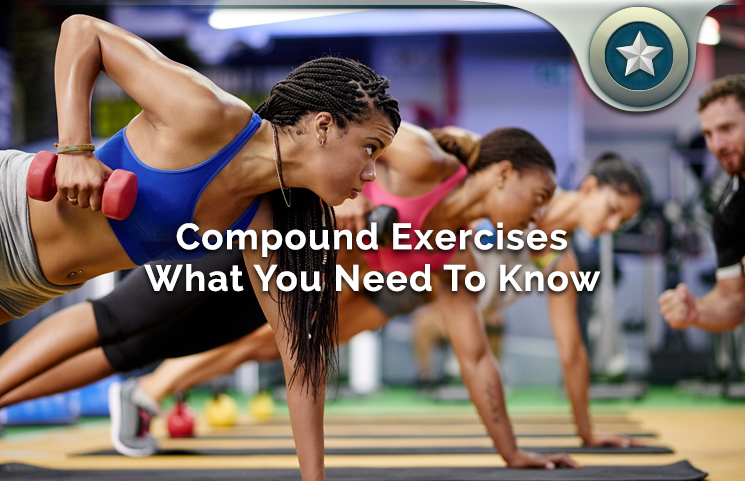Perhaps you have heard of compound or isolation exercises, and if so you may have no clue what that means. Well, I was once like you…but luckily, I've compiled all the information you need to know right here to make it easy for you.
There is a lot to learn about these exercises. First, it is good to know that exercises are categorized or grouped depending on how many muscles or what group of muscles are trained or used during the workout. Compound lifts are exercises that make use of an array of muscles or joints in one or more particular movements. Compound exercises particularly involve these three major exercises:
- Bench Press
- Squat
- Deadlift
On the other hand, isolation movements during your workout only utilize one muscle.
Compound Exercises Versus Isolation Exercises
When doing compound muscle exercises, it is expected that you will show more strength than if you were doing an isolation exercise because you have more muscles working together. For example, if you try out the bench press, it is the massive chest muscles, particularly the pectoralis major, that will help you shift your weight in your initial stages.
These muscles will be of great help in your exercises during the transition into triceps and deltoids. In a nutshell, there is no single muscle used in this chain of movements that can perform a bench press because all of the three main movers need to be involved in the exercise to make it happen. For this reason, the weights used on the skull crusher cannot have space anywhere near a bench press.
Generally, isolation exercises may make you feel as if you are weaker based on the fact that they only utilize one muscle. However, this doesn’t mean these exercises are disregarded in training programs. Do not be mistaken, they are equally important.
One should note that you also can stimulate the hypertrophy in a given body part or in a muscle, which by the way is fantastic. Keep in mind that bigger muscles definitely have the potential to generate more strength, but that doesn’t necessarily mean that they are always the strongest in the body. The best example is that of powerlifters.
They struggled with the bench press – not because they are weak, but because of their underdeveloped chests. The best way to curb this challenge is by practicing bench presses more often. Actually, it is not uncommon for individuals taking powerlifting programs to do bench presses, probably four times in a week.
However, while they train, they have to put more focus on chest hypertrophy in order to prepare for more intense future movements. This would mean their exercises may be coupled with press variants or flyers.
Even though these exercises may not have any significant effect on bench press strength, they greatly enhance the individual’s skills and will grow their muscles as well. This is why they are done concurrently with the bench press. Whether you are more interested in gaining strength or growing your size, you should ensure your workouts involve both isolation and compound exercises.

Let’s Take A Look At The Breakdown Of The “Big 3”
Squats
Squats are known as the granddaddy of lower body exercises and strength. This may seem like an odd thing to say for a beginner, but it will only take a short period of time and experience before you realize the truth behind this statement.
Perhaps you haven’t yet understood the real meaning of squats. A squat, commonly known as lower body exercises, utilize the hamstrings, glutes, and the lower back. This is how they are done:
- You place a bar across your shoulders or trapezius.
- Slowly move your body downwards as though you intend to sit to the level where your hips are below the thighs.
- Next, you power back up, as if standing and repeat the same process.
The two major bar positions commonly used are the high bar and the low bar. The majority prefer the high bar in their training. And, we can’t forget to mention that this will always remain in the inventory of the recreational gym goer.
When learning the high bar, you place it across your trapezius muscle near the neck. If you are able to squat while maintaining a more upright position, then high bar training will work perfectly for you.
To be sincere, it is quite a challenge learning the low bar, especially when trying to find the best position. The best way to go about this is by first setting the bar up in a high position against the rack and then sliding the bar down on your back.
As you do this, you will, in the end, find a second ranking position and determine where the bar sits nicely. When holding the bar in this position, you will feel some discomfort in the elbows, wrists, and shoulders. This is expected because of the rotation involved as you try and grab the bar.
There Is Something Else You Need To Know…
I know this will catch you by surprise, but it determines the ease with which you can grab the bar and in determining the position that gives you maximum comfort. Let’s dig deeper and see how this goes…
The Role Genetics Play In Regard To Your Favorite Bar Position
Your genetic makeup definitely determines your body contour and physical appearance. This, therefore, plays a role in the bar position you finally choose.
You will prefer high bar if you have a longer torso length, wider stance, relatively shorter femur length, greater ankle flexion, and more quadriceps dominance. You will prefer low bar if you have greater gluteal strength, shorter torso, wider stance, and relatively longer femur length.
Additionally, you are better off with low bars if you wear flat shoes. They work great with no heel elevation. High bar squats, on the other hand, works better with some heel elevation, and if you prefer the high bar, you may want to invest in weightlifting shoes.
Bench Press
As earlier mentioned, the “Big 3” are considered incomplete if they don’t include the bench press. One thing that makes the bench press stand out in full powerlifting competition and in any other bench competition is its prominence. The bench press is a must-do in most commercial gyms.
You are at liberty to claim that both barbell row and push press works perfectly in building the upper body. However, the truth of the matter is, you need all three if you want the best results in the development of real power and strength.
If you do not know what bench presses are, let me explain the practical part. This is how you do a bench press:
- Lie down on the bench. It definitely needs to be solid, strong, and comfortable.
- Unrack the bar above your chest and slowly bring it down to your chest.
- Push back up and lift the bar back to its initial position.
You have to do this exercise with caution and bring down the bar in a controlled manner to avoid injuries. During this exercise, the following muscles are trained:
Pectoralis muscle:
- Triceps
- Deltoids
- The Latissimus Dorsi
The bench press is one of the powerlifting styles that often receives a strange perception, especially from the uninitiated.
This happens because bench presses are associated with bizarre back arch, strange foot position, and potentially wider grip.
As stated in the rule book, this happens because your shoulders, butt, and head need to be in contact with the bench while your feet stay flat on the floor. There is no single mention of where your back needs to be.
When you raise your back, which means the chest will also be lifted, you reduce the range of motion over which the bar can travel. The end result is a shift in more weight.

Deadlift
Compared to other movements, deadlifts use the highest number of muscles, as listed below:
- Upper Back
- Forearms
- Glutes
- Quadriceps
- Hamstrings
Based solely on the high number of muscles used, the deadlift is obviously the strongest of all. For those who are not aware of deadlift exercises, let me break it down. To do these movements, you:
- Have the barbell on the floor
- Then pick it up from the floor and lift it to the height of your hips.
- As you do this, your shoulders, hips, and knees will be locked out
The set up one decides to use when doing deadlifts varies across different trainees. Not sure about this? Visit YouTube and learn more by watching the pros do it. Doing so will help you gain a clear understanding of the exercise.
Conventional or Sumo
Just like the case with squats, we have two types of deadlift exercises. If you choose the conventional deadlift, which happens to be narrow, the hand spacing upon the bar will be narrow due to the narrow foot space.
Sumo deadlift, on the other hand, involves a wider stance given that your feet must be turned out while your arms are fairly narrow.
There is one distinction between the two types of deadlift exercises. Sumo has a shorter range of travel motion as compared to conventional. Overall, it requires a short torso length and relatively longer femur length. This, however, does not in any way imply that every low bar squatter will definitely sumo-deadlift. The arm length also has a role to play in the entire set up.

Compound Exercises Final Word
I can’t deny the fact that compound exercises are strong, big, and fun, especially if you are inclined towards that direction.
However, this doesn’t mean that isolation exercises are inferior. What one chooses all depends on the training goals. As mentioned earlier, you are better off if you employ a mix of the two so that you can strike a balance in your exercises.









